Dear Ron DeSantis: African blacksmiths would like a word

- Share via
The world is ending but the arroz con pollo at the Colibrí pop-up in Hollywood is keeping life worth living. I’m Carolina A. Miranda, art and design columnist for the Los Angeles Times, and I’m here with the good Peruvian food and the essential arts news:
Cultures of iron
Over the last couple of weeks, my colleague Michael Hiltzik has been systematically demolishing the red hot garbage that is the state of Florida‘s new academic standards, recently passed by Gov. Ron DeSantis’ cronies, which state, among other things, that “slaves developed skills which, in some instances, could be applied for their personal benefit.” Queried about the standards, DeSantis pointed to “folks that eventually parlayed, you know, being a blacksmith into doing things later in life.”
First things first: There was no benefit to being enslaved. Period.
Beyond that, Florida’s State Department of Education has been busy getting its basic facts wrong. A state rep supplied a list of 16 African Americans who had allegedly “benefited” from the trades they picked up as slave laborers; Hiltzik combed through the list and notes that nine of those people were never enslaved and at least 13 of them did not learn their skills while enslaved.
Earlier this week, Hiltzik followed up with a report on the backgrounds of the non-historians devising some of these historical standards — and the “supine” ways the press has covered the controversy. (Pure fire.)
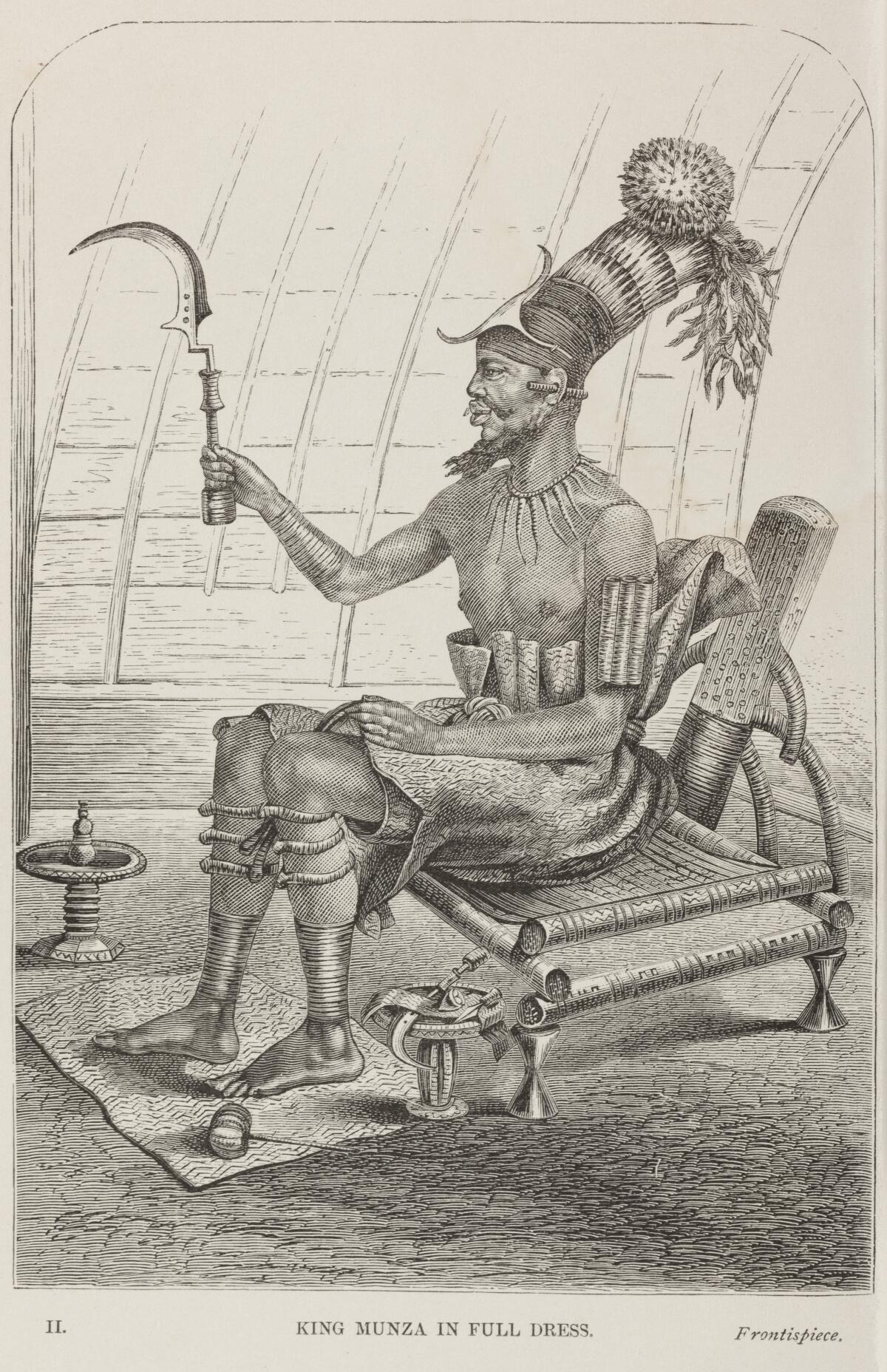
For one, DeSantis and his ilk misunderstand how slavery worked. Kidnapped African laborers were not blank slates onto which Europeans bestowed knowledge and skills. The Washington Post dug into Pulitzer Prize-winning historian David Hackett-Fischer‘s deep study of the institution of slavery, “African Founders: How Enslaved People Expanded American Freedom,” published last year, which notes that laborers were often kidnapped because of their skills.
Enslaved workers from the Windward Coast of West Africa were brought to the Carolinas, Georgia and Florida to cultivate rice — because they’d already been cultivating rice for thousands of years. Cultures known for boatbuilding were sent to Chesapeake, an important riverine and seafaring port, since they could support navigation. Herding cultures like the Fulani (and their descendants) were in demand in states with livestock ranching.
African knowledge helped build these local economies. Not the other way around.
Make the most of L.A.
Get our guide to events and happenings in the SoCal arts scene. In your inbox every Monday and Friday morning.
You may occasionally receive promotional content from the Los Angeles Times.
Which brings me to blacksmiths.
A tweet (I’m not calling it an “X”) by Times art critic Christopher Knight reminded me of a staggeringly wonderful exhibition organized by UCLA’s Fowler Museum in 2018. “Striking Iron: The Art of African Blacksmiths” later traveled to the National Museum of African Art in Washington, D.C., and the Musée du quai Branly-Jacques Chirac in Paris. As Knight noted in his review of the show, blacksmithing traditions in cultures south of the Sahara had deep roots that went back millennia, well before the dawn of chattel slavery.
For the record:
11:32 a.m. Aug. 6, 2023An earlier version of this newsletter stated that “Striking Iron: The Art of African Blacksmiths” traveled to the National Museum of African American History and Culture; it went to the National Museum of African Art in Washington, D.C.
African blacksmiths arriving in the Americas had deep knowledge of the construction and management of furnaces, the smelting of ores and the fabrication of these metals into aesthetically striking designs.
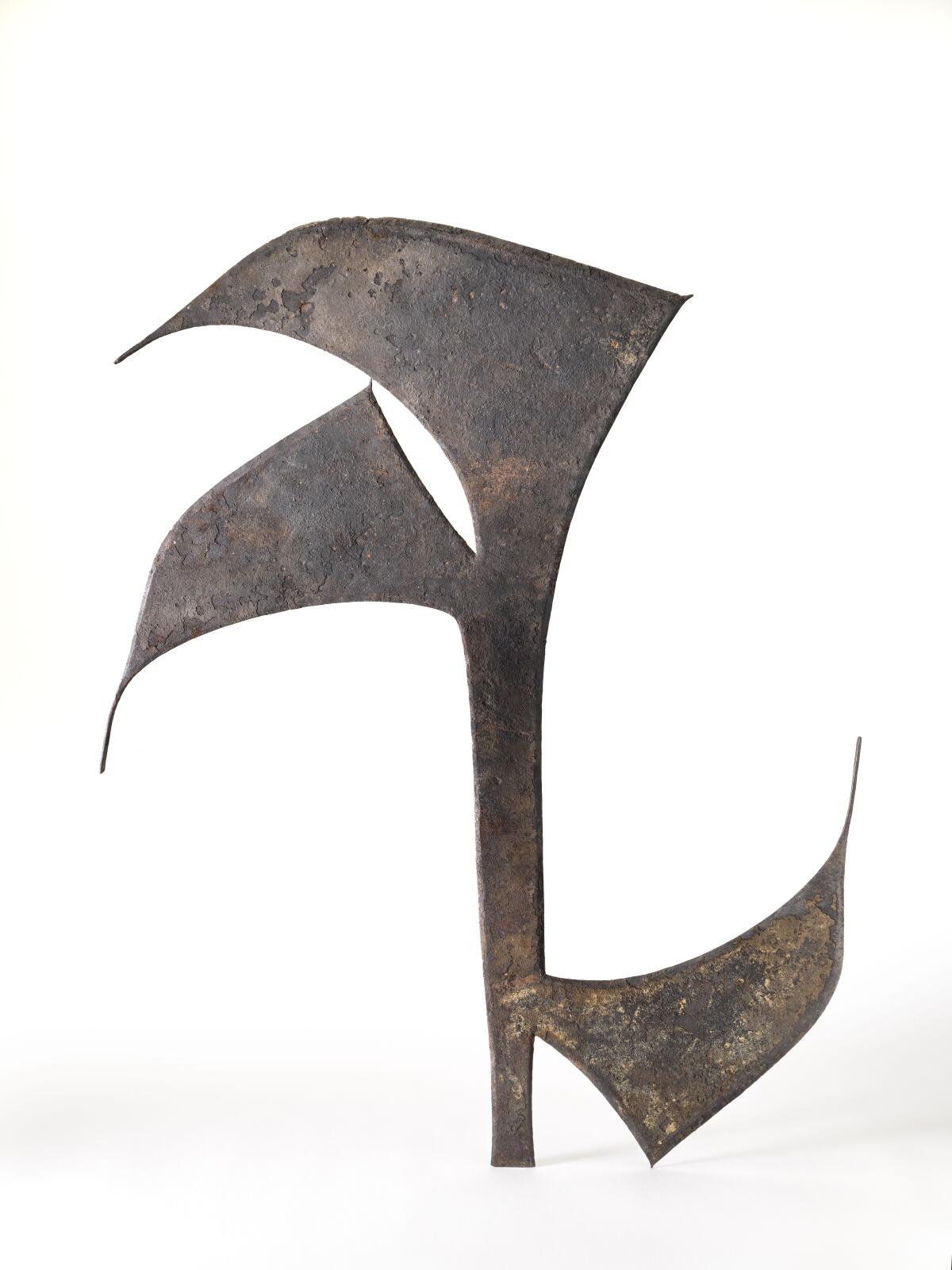
Moreover, the Fowler’s exhibition didn’t simply show that many African cultures, such as the Dogon of Mali or the Bantu-speaking Kongo, were remarkable blacksmiths. It revealed that iron was central to many African cosmologies.
“Iron permeates the lateritic soils of Africa as well as the beliefs, practices, and histories of the continent’s myriad cultures,” writes African art historian Henry J. Drewal in the exhibition’s highly informative 512-page catalog. “Taken from earth, ore containing iron must be heated and its impurities separated before the iron itself is worked tirelessly to be transformed into matter useful for culture. Ironworkers — smelters and blacksmiths — are those possessing the extraordinary bodily knowledge and wisdom to make momentous transformation possible. They, together with the medium they transform, are alive with spirit. This presence makes them cosmic connectors capable of transforming nature to create culture.”

Iron smelting techniques appear as part of African origin myths, and the figure of the blacksmith, along with his tools, is often imbued with extraordinary significance. To don iron objects was to wield power, as shown in a 19th century engraving of King Munza of the Mangbetu culture. In the Karagwe Kingdom of northern Tanzania, a new king was installed to the beat of a drum that echoed the rhythm of a blacksmith’s hammer, write historians William J. Dewey and Allen F. Roberts in the catalog, “thus ‘forging’ an ordinary person into a king through ritual processes.”
Thousands of enslaved workers with knowledge of ironworking were intentionally brought to labor in the United States because of their great skill. The idea that African workers were “taught” how to forge metal by some benevolent slaveholder is absurd. All that decorative wrought iron that graces Southern buildings? It is part of an African tradition thousands of years deep.
DeSantis and the Florida State Board of Education would know this ... if they picked up a book.
On and off the stage
Zora Howard’s “Stew” — a 2021 finalist for the Pulitzer in drama — is on view at the Pasadena Playhouse, directed by Tyler Thomas, and it chronicles three generations of Black women whose struggles unfold over a series of cyclical conversations. It doesn’t always work as drama, reports theater critic Charles McNulty. “The play doesn’t so much develop as erupt,” he writes. “Hints of the tragic ending are discreetly placed, but it’s only in retrospect that the dots are connected.”
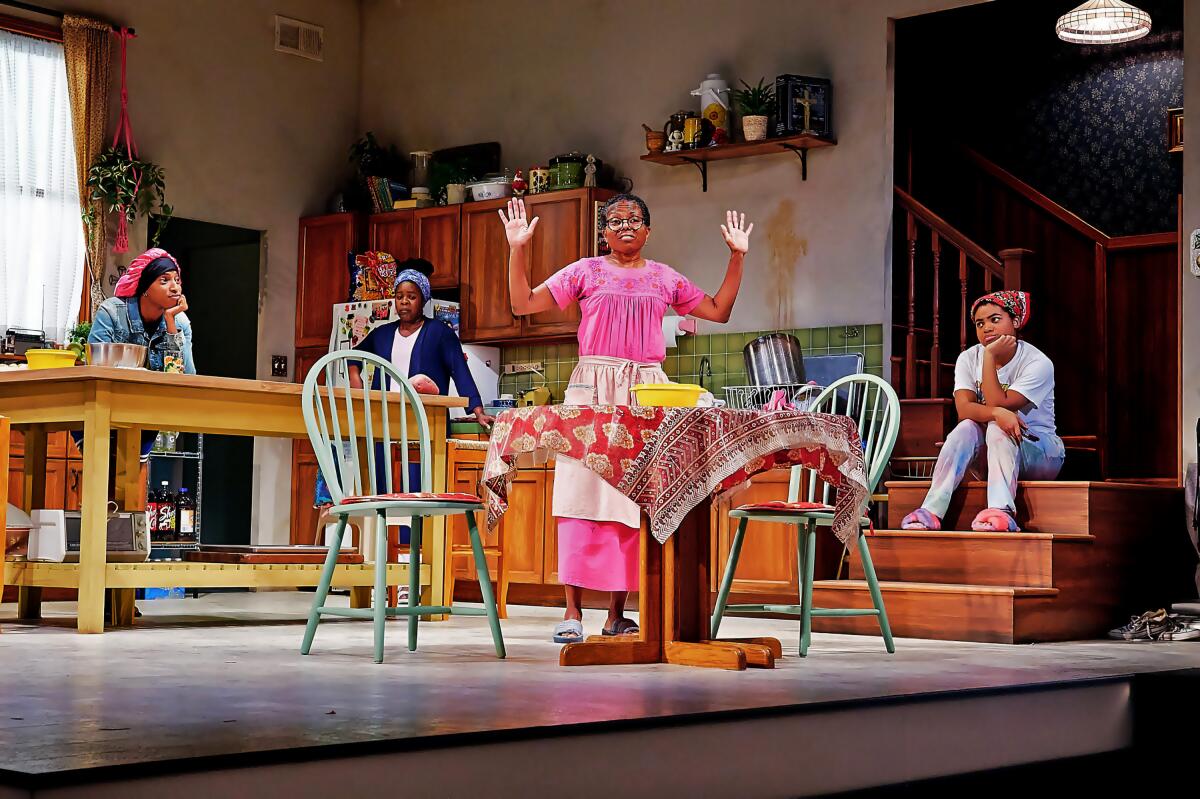
McNulty also attended a Stephen Sondheim tribute night at the Hollywood Bowl on Sunday. “The lyrics scraped against some hard existential truths, but the expansive musical comedy vision assured that life will go on until it doesn’t and we might as well enjoy it as best we can while we can,” he writes. “As headliner Patti LuPone sang in ‘The Ladies Who Lunch,’ ‘I’ll drink to that.’”
In and out of the galleries
Christopher Knight reports on a small but very intriguing show at the Getty Museum featuring paintings by 18th century Italian baroque painter Giacomo Ceruti. The artist, with remarkable dignity, often features paupers in portrait-style paintings generally reserved for the well-to-do. “Ceruti’s paintings are a marked departure from most genre paintings focused on the poor,” Knight writes, “in that they represent neither comic condescension nor moralizing screed directed at the subjects’ plight.”
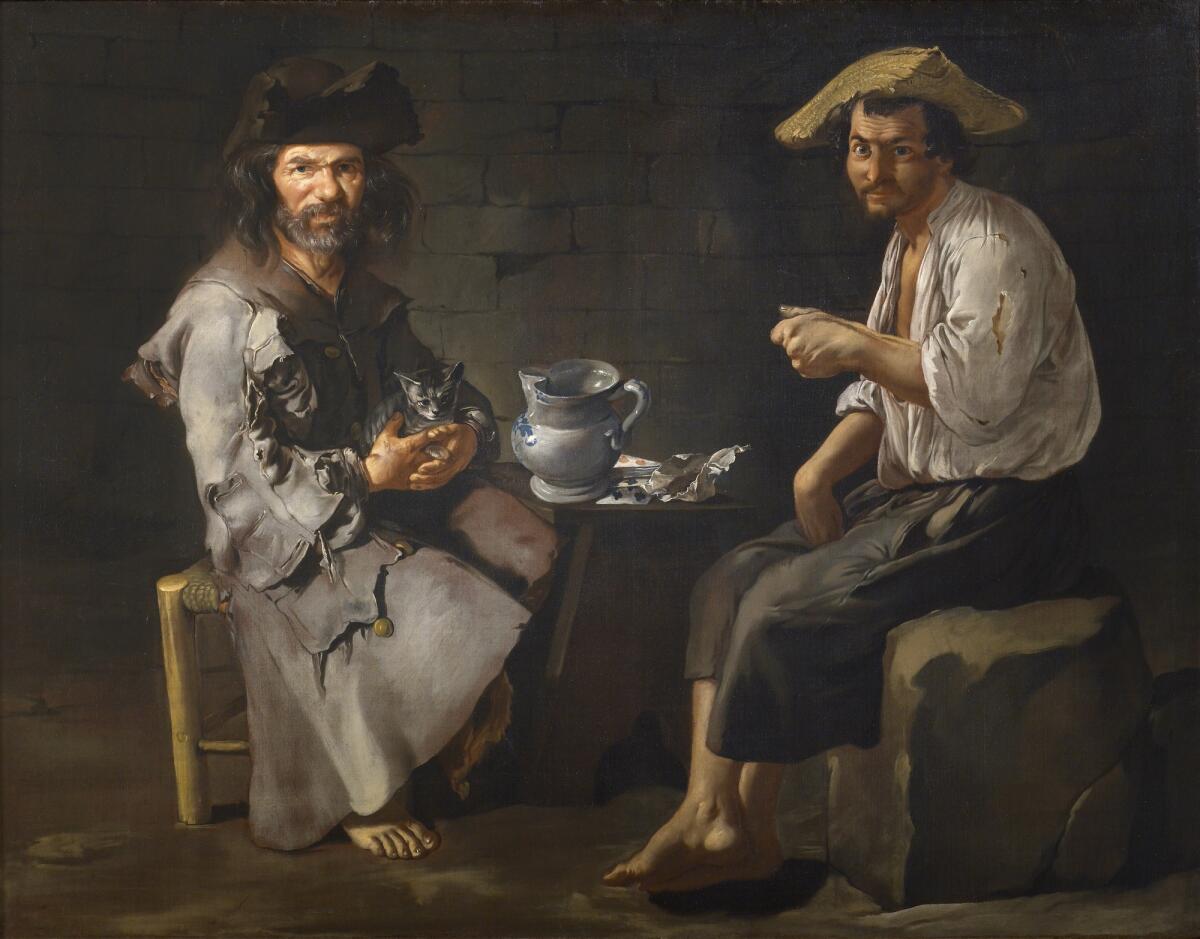
Retrospectives on opposite sides of the continent feature the work of two artists who have challenged narratives around colonialism and helped preserve their cultures’ history. As I report this week, shows by Amalia Mesa-Bains at BAMPFA in Berkeley and Jaune Quick-to-See Smith at the Whitney Museum in New York “serve as a vital counter-record to dominant narratives about Indigenous people and Mexicans.”
Cosmo Whyte has a solo show at Anat Egbi‘s Fountain Avenue location whose title, “Hush Now, Don’t Explain,” was inspired by a Nina Simone lyric — one beloved by his father, an architect in Jamaica. “A lot of the work points back to domestic spaces,” he tells contributor Leigh-Ann Jackson about the installations that often take the form of beaded curtains, “and I’m realizing more and more as I progress in my practice, it comes from that experience of growing up with an architect.”

“First, paint one side of the fish with sumi ink, place washi paper atop, then use your fingers to press over the surface to make a print.” Dwight Hwang practices the Japanese artform of gyotaku, or fish rubbing, in which ink and paper are used to create an impression of a fish. Contributor Kaila Yu reports on how Hwang, a Korean American artist, has cultivated a following among collectors.
Contributor J.P. Brammer writes about right-wing concocted controversies over Washington, D.C.’s Museum of the American Latino and what the brouhaha says about identity.
Enjoying this newsletter? Consider subscribing to the Los Angeles Times
Your support helps us deliver the news that matters most. Become a subscriber.
Hyperallergic’s Matt Stromberg has an interesting piece about the evolution of MFA programs — and the dip in applications being experienced by some Southland schools.
Lighthouse, the company that helped kick off the immersive art craze, has filed for bankruptcy.
Moves
The Rauschenberg Foundation has announced its 2023 organizational grant recipients and they include SoCal nonprofits Human Resources L.A., Transformative Arts and El Sereno Community Land Trust.
MOCA Los Angeles has acquired Pope L.’s “Trinket” — a giant installation of a violently flapping U.S. flag.
Passages
BAFTA-winning composer Carl Davis, known for his scores for BBC’s “Pride and Prejudice” and the feature film “The French Lieutenant’s Woman,” has died at 86.
Paul Reubens, the actor and comedian best known for his portrayal of the eccentric, nerdy and gloriously guileless Pee-wee Herman, is dead at 70. “I don’t want to get corny on you,” he told The Times in 2014, “but I am kind of corny, and that’s one of the greatest things about my career.”
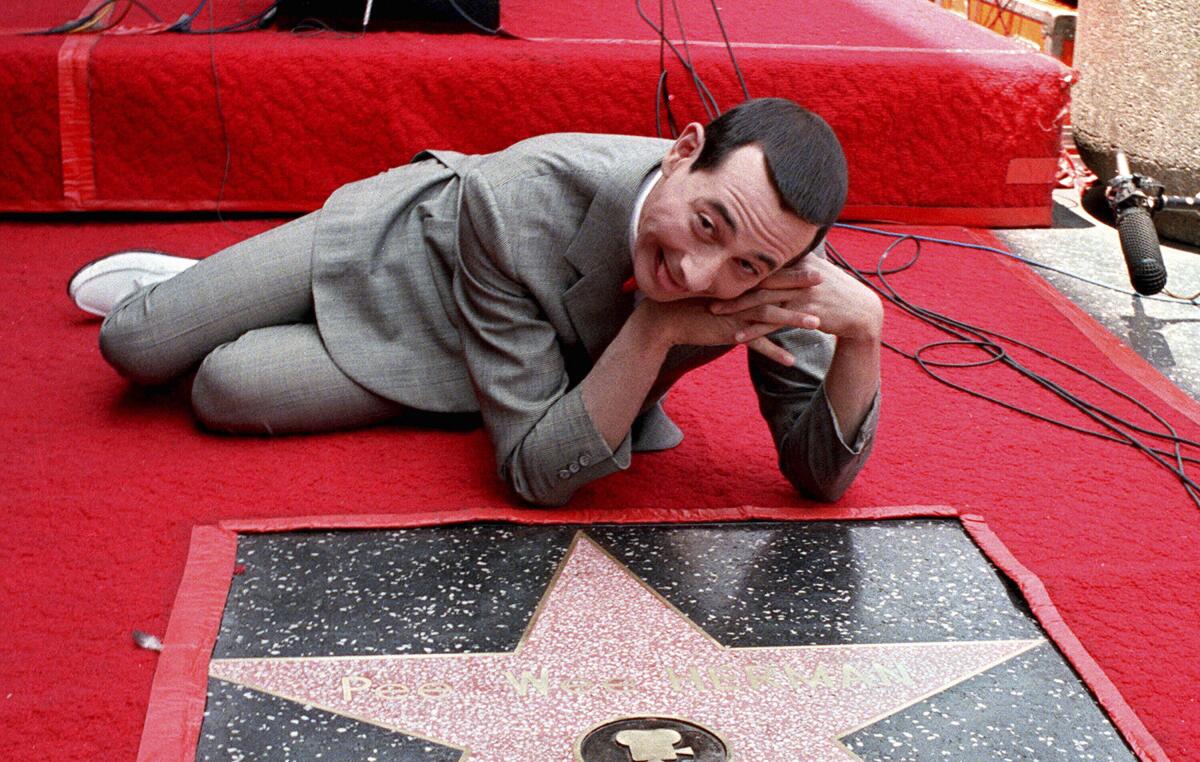
SunRay Kelley, a vernacular builder in Washington state known for creating idiosyncratic homes, including castles, temples and tree houses, has died at 71.
Roberto Rodriguez, a prolific chronicler of Chicano life, is dead at 69.
In other news
— Jeff Ernsthausen at ProPublica has a great (and enraging) report on how the ultra-wealthy use cultural foundations to save money on taxes — while providing little to no public benefit.
— New York dancer O’Shae Sibley was killed while vogueing at a Brooklyn gas station. The NYPD reportedly is investigating the killing as a possible hate crime.
— UNESCO has recommended adding Venice to its list of endangered heritage sites.
— Spanish architects Nieto Sobejano has been chosen to design Dallas Museum of Art expansion.
— UC Santa Barbara has put out a request for proposals for new student housing, indicating that the Dormzilla plan may be dead for good. At least one hopes.
— A view of LACMA construction by drone.
— The “Barbie” movie is infused with a very specific era of Barbie, writes Alexandra Lange. And that era is the 1970s.
— What do the Pasadena Playhouse and the aerospace industry have in common? They were where Jack Chick, the purveyor of Chick Tracts, got his start.
— The Guggenheim Museum has raised admission to $30.
— “I would recommend everyone see this movie and no one ever make another one like it again.” Love this jam by art critic Carlo McCormick about the documentary “Make Me Famous.”
And last but not least ...
Love, love, love this story about a Beverly Buchanan installation in Georgia that is being reclaimed by nature — as intended by the artist.
The biggest entertainment stories
Get our big stories about Hollywood, film, television, music, arts, culture and more right in your inbox as soon as they publish.
You may occasionally receive promotional content from the Los Angeles Times.




